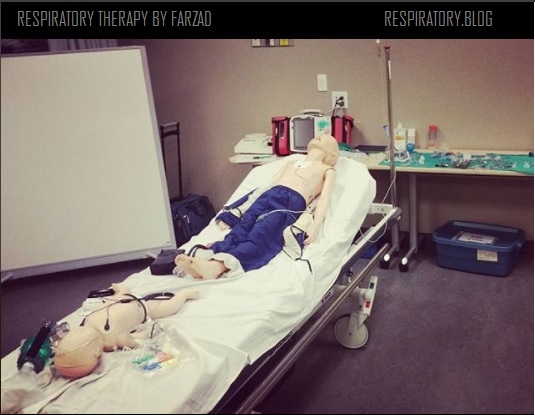Last Monday I was driving through my usual path to work. At the Pulmonary Function Test (PFT) laboratory of Markham Stouffville Hospital, my colleagues and I perform PFT, 6 Minute Walk Test, Home O2 assessment, Arterial Blood Gas and occasional Exercise Induced Asthma test. In the gaps between tests we provide patient education including Asthma, COPD and Smoking Cessation. On my drive to work last Monday around 7am, I was waiting to make a left turn when a car ran a red light and collided with the vehicle travelling in the perpendicular direction. Because of the impact, the cars changed path and hit my vehicle. Everyone was okay. The cars had to be towed to collision reporting centre before being heading to repair shops. While I sat in the tow truck, the driver walked me through all the steps, gave me advice on what to expect that day and for the following days. He even helped me organized all the required documents as I called my insurance company. As we were waiting for my rental vehicle to arrive, he said, “You said that you are a respiratory therapist… I have a bad habit”. He paused for few seconds and then continued… “I have been trying to quit smoking”.
Over the next 15 minutes we covered some smoking cessation information. I asked him questions and we went through some options. He was motivated and willing.
 A few days later I was reflecting on this interaction and the conversation with him. Sometimes you get to help someone when least expected. In my case you may get to help someone while they are helping you!
A few days later I was reflecting on this interaction and the conversation with him. Sometimes you get to help someone when least expected. In my case you may get to help someone while they are helping you!
Yet another thought, or possibility, came to my mind. Perhaps he asked me a question so I would talk about something I am passionate about. Because over those 15 minutes, I was not thinking about the accident, being late for work, nor the hassles of fixing my car. In that time I was in the zone of helping someone else. It was such a simple way to get someone’s mind off the stress of the situation.
Are there any patient scenarios where this “technique” can be utilized? I am hesitant to call it a technique as by interacting with patients we, the health care providers, can establish a genuine rapport which can further improve patient care. Maybe this method or technique can be used while getting things ready for an ABG? Perhaps before or while having a patient in the PFT body box or CT/MRI machine?
Find out what the patient is passionate about during your ongoing conversation with them. Ask them a relevant question or advice, and watch them focus on something positive.
Let me know if you have used this approach before and how it went!

 In 2016, I gave a talk at the annual Canadian Society of Respiratory Therapists, CSRT, Conference. At that time I was working six days a week, running a blog, and was trying my best to prepare for the presentation. I was excited, nervous and driven. My presentation was far from perfect, however, I learned a lot in the process and from the self-reflection after it was completed.
In 2016, I gave a talk at the annual Canadian Society of Respiratory Therapists, CSRT, Conference. At that time I was working six days a week, running a blog, and was trying my best to prepare for the presentation. I was excited, nervous and driven. My presentation was far from perfect, however, I learned a lot in the process and from the self-reflection after it was completed.